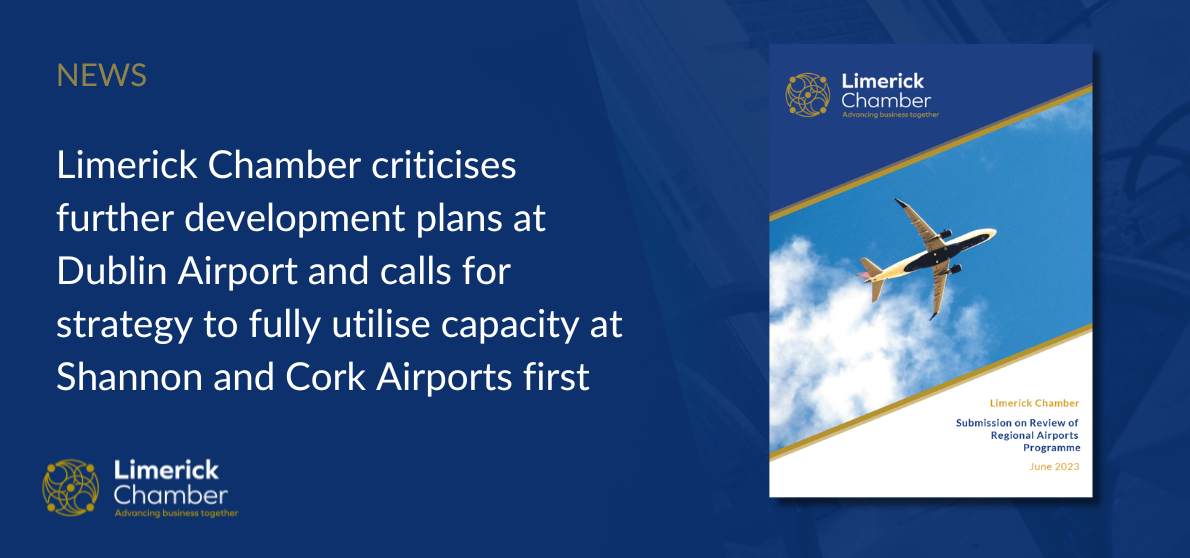COVID-19 Aftermath: Addressing the Protection Gap
So far in this economic series we have examined the impact of the COVID-19 lockdown on ‘unemployment’, debated the potential economic impact across industries, and discussed the short-term stimulus that will be needed to support businesses as they exit lockdown. We will now turn our attention to considering how we can futureproof our economy from further pandemic related shocks.
Solidarity is a word that we have been hearing a lot about lately when discussing Ireland’s response to COVID-19. There is plenty of evidence of it in the responses from both the public and private sectors in recent weeks. The Government has provided relief to the private sector with the introduction of emergency fiscal measures while the private sector has stepped up to the plate and exhibited much flexibility in its response to demand for essential products and services. For example, multiple distilleries have changed their production lines to address the need for hand sanitizer, private companies have used their international connections to source PPE and online entertainment service providers have reduced streaming quality to relieve pressure on broadband.
We must face up to the harsh reality that the support measures that have now been put in place by Government are not sustainable in the long term. In a previous blog we discussed the need to extend supports beyond 12 weeks to the most vulnerable businesses, this is something that needs to, and more importantly, should be done because of the current low cost of borrowing. But what happens when we move beyond the next six to nine months? What should the ‘new normal’ practice look like?
COVID-19 has lifted a rock on the inadequacies of our social and economic structures. We must learn from this crisis to be better prepared for the next shock that is inevitably in store.
Historians have recorded the global aftershocks that were felt due to second and third waves of infection in the years after the ‘Great’ Spanish flu pandemic of 1918. It forces the question – how do we create a new ‘normal’ that prepares us for the challenges of potential second or third waves of infection, or worse even, entirely new threats?
Our new normal must recognise the fundamental changes in demographics, work and technology. It must be a normal where a radical overhaul of our social safety net is in place and the investment that is necessary in our workforce is a reality, where all citizens who need it can access the training that enables them to thrive as the impact of increased digitalisation and a low carbon economy take hold. This normal must support entrepreneurs and protect the SMEs that are the backbone of our economy as a matter of course.
Government will have to assume a more active role in the economy in the immediate aftermath of this crisis. There is little doubt, should the effects or the pandemic be prolonged, that this will necessitate a reform and broadening of our tax base where a range of options that have been hitherto considered as politically unpalatable will have to be seriously considered. These are reforms that should not frighten anyone as long they provide clear tangible support for the implementation of a new social contract based on solidarity, transparency and wellbeing. Furthermore, it is of crucial importance that the Government does not reduce its planned capital spend in a misguided effort to reduce the increased deficit that is an inevitable consequence of this pandemic. The Government must keep the economy moving by delivering on the capital commitments made as part of Project Ireland 2040.
The COVID-19 crisis has exacerbated a multitude of underlying issues in our economy (e.g. inadequate childcare provision, absence of paid sick leave, vulnerability of temporary workers, inadequate investment in infrastructure including healthcare and sustainable transport). Some of these challenges will be addressed in future blogs but for now let’s take a closer look at two of the most pressing elements of the protection gap that exists for employers and employees: 1) Pandemic Insurance Provision; 2) Reinforcement of the Employer-Employee connection.
Pandemic Insurance Provision
Businesses are currently facing unprecedented losses as a result of COVID-19 and this has been made all the more difficult by an inability in most cases to access funds under business interruption insurance coverage. Most insurance companies have historically chosen to exclude coverage for losses arising from communicable diseases. Many businesses are only just now beginning to grapple with the consequences of this decision as it has shorn a key element from their risk management arsenal.
It is easy to understand economically why the insurance industry has shied away from providing coverage for business interruption in times of pandemic, albeit even if it does not sit well morally in respect of certain practices. The ability of the industry to sustain high levels of annual pay-outs across various product lines depends on risk being diversified and applications being at least somewhat staggered. A global pandemic creates the ultimate nightmare scenario for insurers – a perfect storm of synchronous claims coupled with a shrinking portfolio of performing assets.
It is to be expected in such a climate that insurance companies will inevitably respond by attempting to determine ‘new normal’ pandemic coverage contracts that will either make exclusions even more restrictive for businesses or will make their premiums completely unaffordable. Furthermore, the private insurance market will be unable to secure the required amount of capital to hold against risk in such a circumstance.
Government intervention is therefore essential to ensure that businesses are provided with the necessary indemnity to survive future pandemics and to prosper in their aftermath.
Free market economists argue that Government intervention in any industry should be restricted to instances where there is market failure. There can be no doubt that COVID-19 has lifted a rock to expose what some might characterise as market limitations, (others might be less sanguine), within the insurance industry. A partnership of public and private sector interests has been advocated by many commentators as the only way to counter the great societal challenges, natural and man-made disasters of our time.[1] It surely can be argued that the case of a global pandemic easily meets such a ‘disaster’ criteria.
Public Private Partnerships (PPPs) allow for the joint bearing of responsibility and for the efficient sharing of risk. This in turn allows for increased insurance coverage and stronger financial backing around the uncertain distribution of that risk. When considering indemnity against future pandemics the line in the sand for most businesses will be affordability and to address this the government will have to take a role in the design of new insurance instruments. Furthermore, in such a situation the role of the state would have to be expanded from regulatory oversight to include a combination of ex ante and ex post subsidisation.
For guidance on how PPP can operate within the confines of EU State Aid Rules we should look to response efforts for catastrophic events (natural disasters, terrorism). According to the EU “state aid to make good the damage caused by natural disasters is admissible provided there is no objection from the EC”. This ruling was altered in 2014 to exclude a requirement for timely notification and further clarifies what constitutes a natural disaster (earthquakes, landslides, floods, avalanches, tornadoes, hurricanes, volcanic eruptions and wildfires of natural origin” (OJ, 2014a). The eligible damage costs that can be covered by State Aid include “material damage incurred as a result of disaster and loss of income resulting from suspension of activity for a period of 6 months”.
When public-private partnerships are required to provide disaster insurance it can often take the form of government-provided reinsurance or the addition of an extra layer of compensation that is underwritten by the state. Real world examples of insurance PPPs include the French NatCat and the Spanish Insurance Compensation Consortium (ICC). In both cases, insurance against natural hazards is mandatory (linked with a base policy) and funded via a flat rate surcharge on the insurance premium collected by private companies – both systems are backed by an unlimited state guarantee. Other countries have adopted free market natural hazard insurance with ad-hoc governmental relief programmes (Germany) or specific catastrophe funds (Netherlands and Austria).[2]
Innovative partnerships for catastrophe relief have been borne out of the recognition that private insurance markets may not be able to provide full coverage at reasonable premiums in addition to dissatisfaction with ex post government relief efforts. Criticism of these public-private structures have tended to be ground in a belief that the market should likely have been able to provide the necessary coverage without government intervention. While this might be a valid argument in the case of a natural disaster or terrorist attack that is confined to one location, there is no weight to this argument in the context of a pandemic where the symmetric shock that ensues has no respect for physical or geographical boundaries. Government intervention that stimulates the supply of insurance coverage in such a special circumstance should be welcomed as it increases the insurability of a risk that would otherwise be left exposed.
Reinforcement of the Employer-Employee Connection
The restrictions implemented to combat COVID-19 have undoubtedly had a significant adverse effect on our economy. The Government has implemented several measures in the short term to offset the impact of this, most notably the Temporary Wage Subsidy Scheme (TWSS). The current scheme has a shelf life of 12 weeks, and no further details have been given on how this scheme will be revised or phased out after the lockdown period ends.
The COVID-19 crisis has highlighted Ireland’s failure in the past to recognise the importance of maintaining the connection between employers and employees. Protecting this connection can aid countries in rebounding swiftly after an economic shock (cyclical rather than structural). The importance of preserving those connections was recognised by 17 European countries following the 2008 economic crisis when they made accommodating reforms to their existing Short-Time Work Scheme (STWS) – Spoiler Alert: Ireland was not one of them.
Short-time work is a subsidy for temporary reductions in the usual hours worked, as a consequence of businesses being affected by temporary shocks. Employers who experience temporary drops in demand or production as a result of factors outside the company’s control (e.g. economic downturn, natural disaster, extreme weather disruptions) can reduce their employees’ hours instead of laying them off. The reduction in the employee’s income is then offset to a certain degree by a government subsidy. Sound familiar?
A STWS (not to be confused with the newly and hurriedly implemented Covid19 Temporary Wage Subsidy Scheme (TWSS)) has been in operation in Ireland since before the last economic crisis (21,900 employees availed of the scheme in 2009). Why then was this scheme not seen as fit for purpose to deal with the fallout of the COVID-19 restrictions? The structure adopted here is significantly different from the successful STWS that have been implemented in other European countries such as Germany and France. The STWS in Ireland’s case is effectively a partial social transfer administered by the unemployment benefit system (i.e. the daily amount paid is proportional to the maximum job seekers allowance of €203 per week. Furthermore, the payment is paid directly to the employee and not the employer). In contrast the STWS in other countries such as Germany, France and Italy are separate from unemployment benefits[3] and are instead aligned to the employee’s salary (similar to how the TWSS operates) and processed through the employer.
In Germany, flexible working-time arrangements are a deeply embedded characteristic of the labour market. Even in times of prosperity the scheme continues to operate in the background (albeit at a reduced rate). For example, roughly 15,600 German companies availed of the scheme in 2019 (this has increased to 470,000 in the wake of COVID-19). The German STWS covers 60% of lost earnings (68% if there are dependents). The same replacement rate applies in the case of COVID-19, however, eligibility criteria has been loosened and the scheme has been extended to temporary workers. Time restrictions will vary across countries but in the case of Germany the STWS is limited to a period of 12 months. Until 2015, the basic duration was 6 months. However, if exceptional circumstances on the labour market exist, the maximum duration can be extended to up to 24 months by statutory order. The latter was used during the crisis in 2009.
Several studies show that an effective STWS can have positive effects on employment and firm survival – as has been the case in Germany, France[4], Switzerland[5] and Italy[6].
STWS’s are beneficial as they can:
- stabilise employment and reduce unemployment as was the case during the 2008−2009 recession[7]
- prevent employers from losing valuable staff that are often both difficult and expensive to replace once demand recovers
- provide additional funds so that employees can reduce their hours of work without a proportional reduction in their take-home pay
- limit redundancies that often involve considerable cost that can have a long-term effect on profitability and take a psychological toll on workers
Well-designed and targeted short-time work schemes can therefore be an effective tool to save jobs and businesses and to accelerate economic recovery. The STWS schemes vary across countries in terms of eligibility requirements, legal obligation and generosity. However, one clear distinction between Ireland and the majority of other European countries is that the Irish scheme does not operate independently of the unemployment system. For the STWS to be effective any reform should ensure that employees will earn more on the STWS than they would receive in unemployment benefits. Otherwise, there will be no incentive for employers and employees to utilise the scheme.
The ad hoc manner of the recent fiscal interventions should be avoided in future. The successful uptake of any revised scheme will largely depend on its design. A reformed STWS has the potential to act as a parachute measure that can be triggered in times of crisis.
Going forward we need a new vision for safeguarding the shared interests between government, businesses and employees. COVID-19 has highlighted, in the most devastating way, inefficiencies in our economy and society. Addressing the elements of the protection gap highlighted above would serve to not only shield workers and businesses but also the wider economy in times of crisis.
Former President of Ireland, Mary Robinson, recently noted that “the virus does not discriminate, our societies response does”. Regional disparities are a reality for this country and there is a significant risk that these disparities will worsen in the wake of COVID-19. The Government must avoid introducing a blanket policy programme in the medium to long term. Outside of the national policy measures suggested above, a targeted policy response based on each region’s unique economic profile is the most effective route towards a more balanced economic recovery – more on this in the next blog.
[1] Summary of responses received to the European Commission’s Green Paper on the insurance of natural and man-made disasters, available at: http://ec.europa.eu/finance/consultations/ 2013/disasters-insurance/docs/summary-report_en.pdf
[2] Schwarze and Wagner (2009)
[3] Hijzen and Venn (2011)
[4] Cahuc et al. (2018)
[5] Kopp and Siegenthaler (2019)
[6] Giupponi and Landais (2018)
[7] Cahuc and Carcillo (2011)




Share On.....